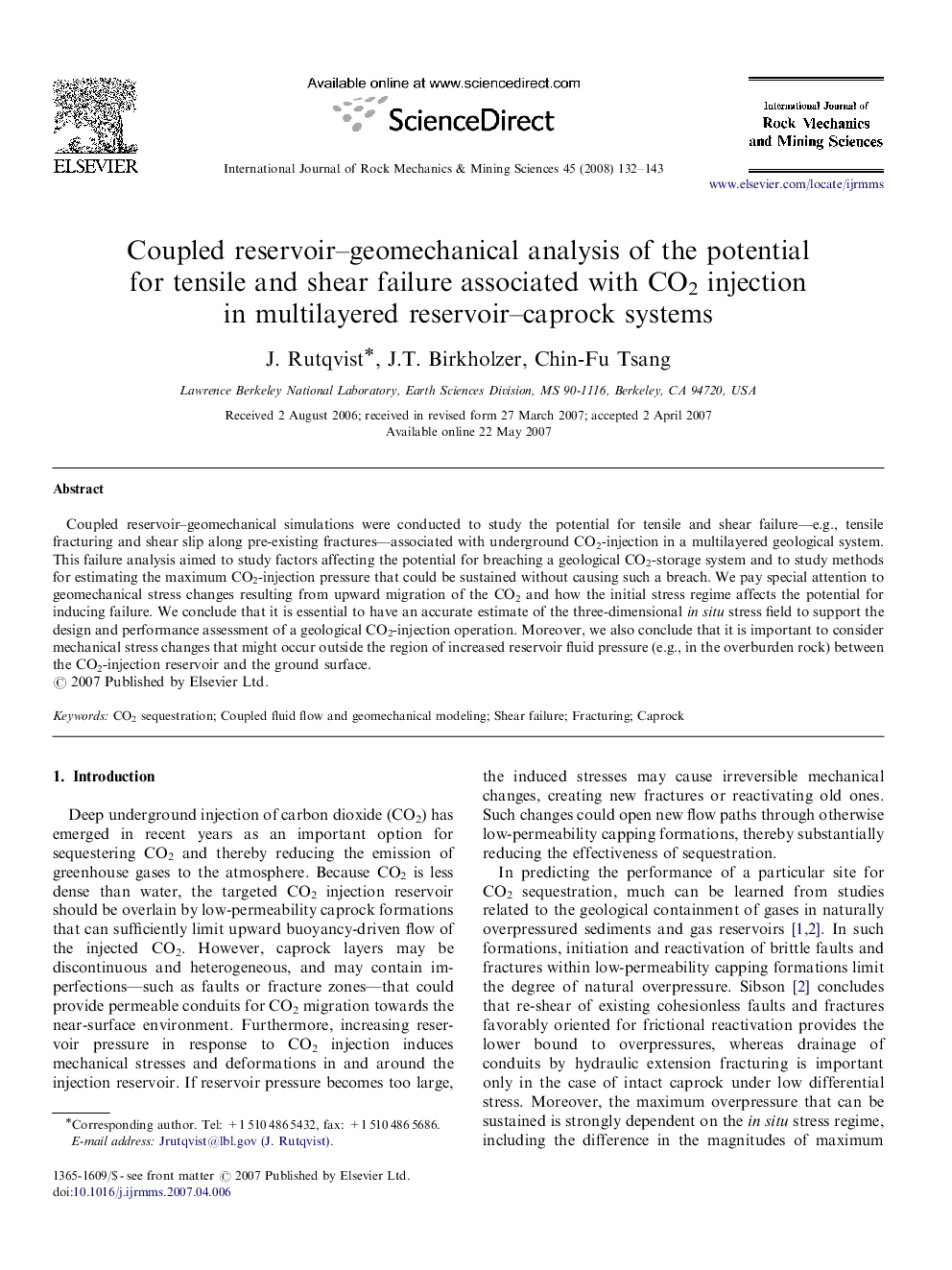| Article ID | Journal | Published Year | Pages | File Type |
|---|---|---|---|---|
| 810206 | International Journal of Rock Mechanics and Mining Sciences | 2008 | 12 Pages |
Coupled reservoir–geomechanical simulations were conducted to study the potential for tensile and shear failure—e.g., tensile fracturing and shear slip along pre-existing fractures—associated with underground CO2-injection in a multilayered geological system. This failure analysis aimed to study factors affecting the potential for breaching a geological CO2-storage system and to study methods for estimating the maximum CO2-injection pressure that could be sustained without causing such a breach. We pay special attention to geomechanical stress changes resulting from upward migration of the CO2 and how the initial stress regime affects the potential for inducing failure. We conclude that it is essential to have an accurate estimate of the three-dimensional in situ stress field to support the design and performance assessment of a geological CO2-injection operation. Moreover, we also conclude that it is important to consider mechanical stress changes that might occur outside the region of increased reservoir fluid pressure (e.g., in the overburden rock) between the CO2-injection reservoir and the ground surface.
